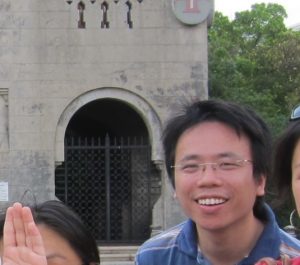
Chester Chun Seng KAM 甘俊生
| Associate Professor |
| Programme Coordinator of Master of Science in Data Science (Analytics in Teaching and Learning) |
| Faculty of Education, University of Macau |
For my full list of publications, see Google Scholar:
https://scholar.google.com/citations?user=xNReBF8AAAAJ&hl=en&oi=sra
Zhang, M. X., Kam, C. C. S., & Wu, A. M. S. (2024). The reciprocity between psychological need frustration and adolescent problematic smartphone use. Journal of Applied Developmental Psychology, 91, 101634.
Cheng, E. H., Kam, C. C. S., & Cui, T. (2023). Revisiting grit: How much does it overlap with resilience? International Journal of Educational Research, 119, 102187.
Cui, T., Cheng, E. H., Kam, C. C. S., & Liu, Q. (2023). A Moderated Mediation Model of Socio-Economic Status, Hope, Teacher-Student Relationship, and Autonomous Learning among Chinese Middle School Students. Child Indicators Research, 16(2), 671-688.
Tao, V. Y., Kam, C. C. S., Li, Y., & Wu, A. M. (2023). Differential prospective relationships of social-oriented and individual-oriented achievement motivations with achievement goals and affective wellbeing: A 1-year follow-up study. Learning and Instruction, 85, 101734.
Cui, T., Kam, C. C. S., Cheng, E. H., & Ho, M. Y. (2022). Distinguishing between trait desirability and item desirability in predicting item scores: Is informant evaluation of personality free from social desirability? Personality and Individual Differences, 196, 111708.
Kam, C. C. S. (2021). Bifactor model is not the best-fitting model for self-esteem: Investigation with a novel technique. Assessment, 28(7), 1799-1812.
Kam, C. C. S., Hue, M. T., Cheung, C. Y., Risavy, S. D. (2020). Factor Structure of the Attitudes toward Cheating Scale: An Exploratory Structural Equation Modeling Analysis. Current Psychology, 39, 1843-1852. doi:10.1007/s12144-018-9887-6
Kam, C. C. S., Hue, M. T., & Cheung, C. Y. (2018). Academic dishonesty among Hong Kong secondary school students: Application of theory of planned behaviour. Educational Psychology, 38(7), 945-963. doi:10.1080/01443410.2018.1454588
Kam, C. C. S., Hue, M. T., & Cheung, C. Y. (2018). Plagiarism of Chinese Secondary School Students in Hong Kong. Ethics & Behavior, 28(4), 316-335. doi:10.1080/10508422.2017.1333909
Zhou, M., & Kam, C. C. S. (2017). Trait procrastination, self-efficacy and achievement goals: The mediation role of boredom coping strategies. Educational Psychology. Advanced online publication. doi: 10.1080/01443410.2017.1293801
Oon, P. T., Benson, S., & Kam, C. C. S. (2017). Psychometric quality of a student evaluation of teaching survey in higher education. Assessment and Evaluation in Higher Education, 42, 788-800. doi:10.1080/02602938.2016.1193119
Kam, C., Morin, A., Meyer, J. P., & Topolnytsky, L. (2016). Are commitment profiles stable and predictable? A latent transition analysis. Journal of Management, 42, 1462-1490. doi: 10.1177/0149206313503010
Zhou, M., & Kam, C. C. S. (2016). Hope and generalized self-efficacy: Same construct or different constructs? Journal of Psychology, 150, 543-559. doi:10.1080/00223980.2015.1113495
Teo, T., Cheung, H. Y., & Kam, C. C. S. (2016). Validation of a Chinese version of the Psychological Sense of School Membership (C-PSSM): Tests of measurement invariance and latent mean differences. Current Psychology, 35, 83-91. doi: 10.1007/s12144-015-9350-x
Kam, C. C. S., & Zhou, M. (2016). Is the Dark Triad better studied using a variable- or a person-centered approach? An exploratory investigation. PLoS One. doi:10.1371/journal.pone.0161628.
Kam, C., Risavy, S. D., & Perunovic, W. Q. E. (2015). Using over-claiming technique to probe social desirability ratings of personality items: A validity examination. Personality and Individual Differences, 74, 177-181. doi:10.1016/j.paid.2014.10.017
Kam, C., Risavy, S. D., Perunovic, W. Q. E., & Plant, L. (2014). Do subordinates formulate an impression of their manager’s implicit person theory? Applied Psychology: An International Review, 63, 267-299. doi:10.1111/j.1464-0597.2012.00521.x
Paunonen, S., & Kam, C. (2014). The accuracy of roommate ratings of behaviors versus beliefs. Journal of Research in Personality, 52, 55-67. doi:10.1016/j.jrp.2014.07.006
Teo, T., & Kam, C. (2014). A measurement invariance analysis of the General Self-Efficacy Scale (GSES) on two different cultures. Journal of Psychoeducational Assessment, 32, 762-767. doi:10.1177/0734282914531707
Teo, T., & Kam, C. (2014). Validity of the Internet Addiction Test for Adolescents and Older Children (IAT-A): Tests of measurement invariance and latent mean differences. Journal of Psychoeducational Assessment, 32, 624-637. doi:10.1177/0734282914531708
Liang, S., Cheung, S. F., Kam, C. C. S., (in press). A Constrained Factor Mixture Model for Detecting Careless Responses that is Simple to Implement. Journal of Pacific Rim Psychology.
Kam, C. C. S., & Cheung, S. F. (2024). A Constrained Factor Mixture Model for Detecting Careless Responses that is Simple to Implement. Organizational Research Methods, 27(3), 443-476.
Kam, C. C. S., Cheng, E. H., & Cui, T. (2023). Measuring Self-Esteem with Expanded Format in a Fraction of Time: ESE-S and ESE-US. Journal of Personality Assessment, 106(2), 196-207.
Kam, C. C. S., & Meyer, J. P. (2023). Testing the nonlinearity assumption underlying the use of reverse-keyed items: A Logical Response Perspective. Assessment, 30(5), 1569-1589.
Kam, C. C. S., Meyer, J. P., & Sun, S. (2021). Why do people agree with both regular and reversed items? A logical response perspective. Assessment, 28(4), 1110-1124.
Kam, C. C. S., & Sun, S. (2020). Method factor due to the use of reverse-keyed items: Is it simply a response style artifact? Current Psychology. Advanced online publication. doi:10.1007/s12144-020-00645-z
Kam, C. C. S. (2020). Expanded format shows better response consistency than Likert-scale format in the measurement of optimism. Personality and Individual Differences, 152, 109606. doi: 10.1016/j.paid.2019.109606
Kam, C. C. S. (2020). Testing the assumption of population homogeneity in the measurement of dispositional optimism: Factor mixture modeling analysis. Journal of Personality Assessment, 102(2), 238-249.
Kam, C. C. S., & Fan, X. (2020). Investigating response heterogeneity in the context of positively and negatively worded items by using factor mixture modeling. Organizational Research Methods, 23(2), 322-341. doi:10.1177/1094428118790371
Kam, C. C. S., & Chan, G. H. (2018). Examination of the validity of instructed response items in identifying careless respondents. Personality and Individual Differences, 129, 83-87. doi:10.1016/j.paid.2018.03.022
Kam, C. C. S. (2018). Novel insights Into Item Keying/Valence Effect Using Latent Difference (LD) Modeling Analysis. Journal of Personality Assessment. Advance online publication. doi:10.1080/00223891.2017.1369095
Kam, C. C. S. (2018). Why do we still have an impoverished understanding of the item wording effect? An empirical examination. Sociological Methods & Research, 47(3), 574-597. doi:10.1177/0049124115626177
Kam, C. C. S. (2016). Further considerations in using items with diverse content to measure acquiescence. Educational and Psychological Measurement, 76, 164-174. doi:10.1177/0013164415586831
Kam, C. C. S., & Meyer, J. P. (2015). Implications of item keying and item valence for the investigation of construct dimensionality. Multivariate Behavioral Research, 50, 457-469. doi:10.1080/00273171.2015.1022640
Kam, C. C. S., & Meyer, J. P. (2015). How careless responding and acquiescence response bias can influence construct dimensionality: The case of job satisfaction. Organizational Research Methods, 18, 512-541. doi:10.1177/1094428115571894
Kam, C. C. S., & Zhou, M. (2015). Does acquiescence affect individual items consistently? Educational and Psychological Measurement, 75, 764-784. doi:10.1177/0013164414560817
Kam, C. (2013). Probing item social desirability by correlating personality items with Balanced Inventory of Desirable Responding (BIDR): A validity examination. Personality and Individual Differences, 54, 513-518. doi:10.1080/00224545.1993.9712117
- Doctoral Level: Applications of Advanced Quantitative Methods
- Doctoral Level: Introducing Quantitative Research (previous)
- Master’s Level: Quantitative Methods, Data Management, and Analysis in Educational Research
- Master’s Level: Educational & Psychological Assessment (previous)

